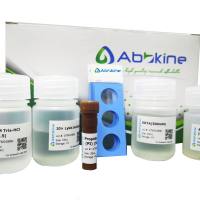Specific DNA breaks underlie many morphological changes in normal and damaged cells. They can serve as important markers in cell and tissue research. Yet historically, the labeling of DNA breaks in situ was most often limited to the identification of apoptotic cells. Consequently, the major techniques for analysis of DNA cleavage in tissue sections were initially developed for the visualization of apoptotic death. These assays rely on enzymatic labeling of DNA breaks to detect the characteristic DNA fragmentation seen in apoptosis. One of two methods is typically employed: a) terminal transferase (TdT) digoxigenin dUTP nick end labeling (TUNEL), or b) the Klenow fragment of DNA polymerase I based in situ end labeling. In order to identify various pathological states in situ based on structural DNA changes, a technique to selectively detect the various types of DNA damage is required. However, due to the properties of the enzymes involved in these assays, multiple types of DNA breaks are labeled. The terminal transferase-based assay labels free 3′ hydroxyl groups, which can be present in different types of breaks. As a result, it can detect stretches of single-stranded DNA (gaps) and also both single- and double-stranded breaks of various configurations (blunt-ended, 3′ and 5′ overhangs) (1 ). The Klenow polymerase-based assay in turn labels gaps and various 5′ overhangs (2 ). This prevents the selective visualization of specific types of DNA breaks in situ using these approaches.






